The Schlumberger Brothers
by Janeen Judah
Today, Menil and Schlumberger. The University of Houston presents this series about the machines that make our civilization run, and the people whose ingenuity created them.
The Montrose area of Houston is a leafy, eclectic mix of bungalows, modern townhouses, small businesses, bars and restaurants. On a side street near the University of St Thomas, stands a serene off white one-story building occupying an entire shady block. This "urban oasis" is the Menil Collection, a world-class museum, designed by the renowned Italian architect Renzo Piano.
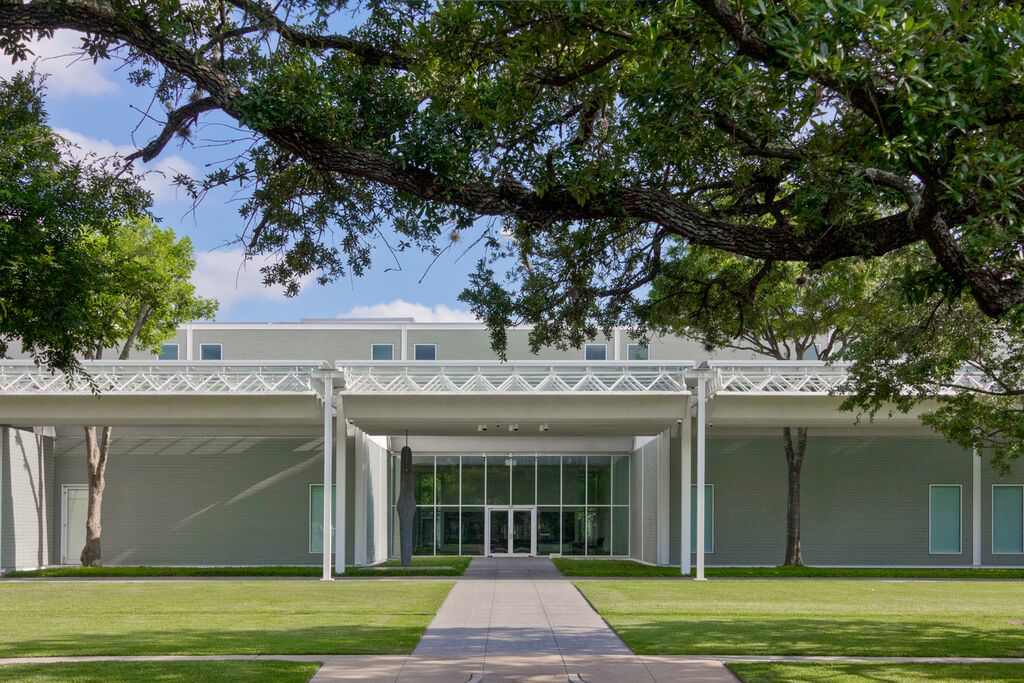
External view of Menil Collection museum, Renzo Piano, architect. Photo courtesy of The Menil Collection.
Dominique and John de Menil were avid collectors of Modern Art starting with Cubists and Surrealists in the 1930's and later the Abstract Impressionists, Pop Art and Minimalism. The Menils became friends and patrons of many of the artists whose work they collected — a who's who of 20th century artists: Magritte, Ernst, Johns, Twombly, Rothko, Rauschenberg — even Warhol. And they avidly collected art from unexpected cultures — west Africa, the Levant, Oceania and the Pacific Northwest. The Menil Collection is one of the world's most significant private art collections and a must-see for visitors to Houston.
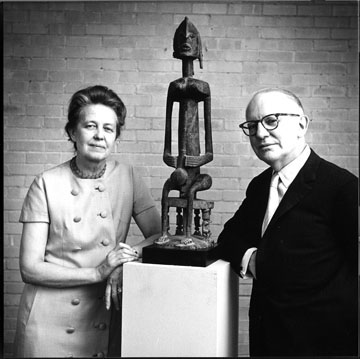
Dominique and John de Menil, 1967, pictured with Seated Figure, Mali, Dogon. Photo: Hickey-Robertson, Houston. Courtesy of Menil Archives, The Menil Collection.
But you may not know the connection between the Menil museum and oil. Dominique de Menil was the daughter of Conrad Schlumberger, one of the brothers who founded the world's largest oilfield services company.
Conrad and Marcel Schlumberger grew up in the Alsace region on the border between France and Germany. The brothers were avid students of math and science, so Conrad studied physics at the Ecole Polytechnique and Marcel studied engineering at the Ecole Central in Paris.
Both brothers worked in the mining industry and Conrad became a professor at the French School of Mines. Conrad was especially interested in earth science and prospecting for mineral deposits. He theorized that mineral bearing rock would conduct more electricity than the rock around it.
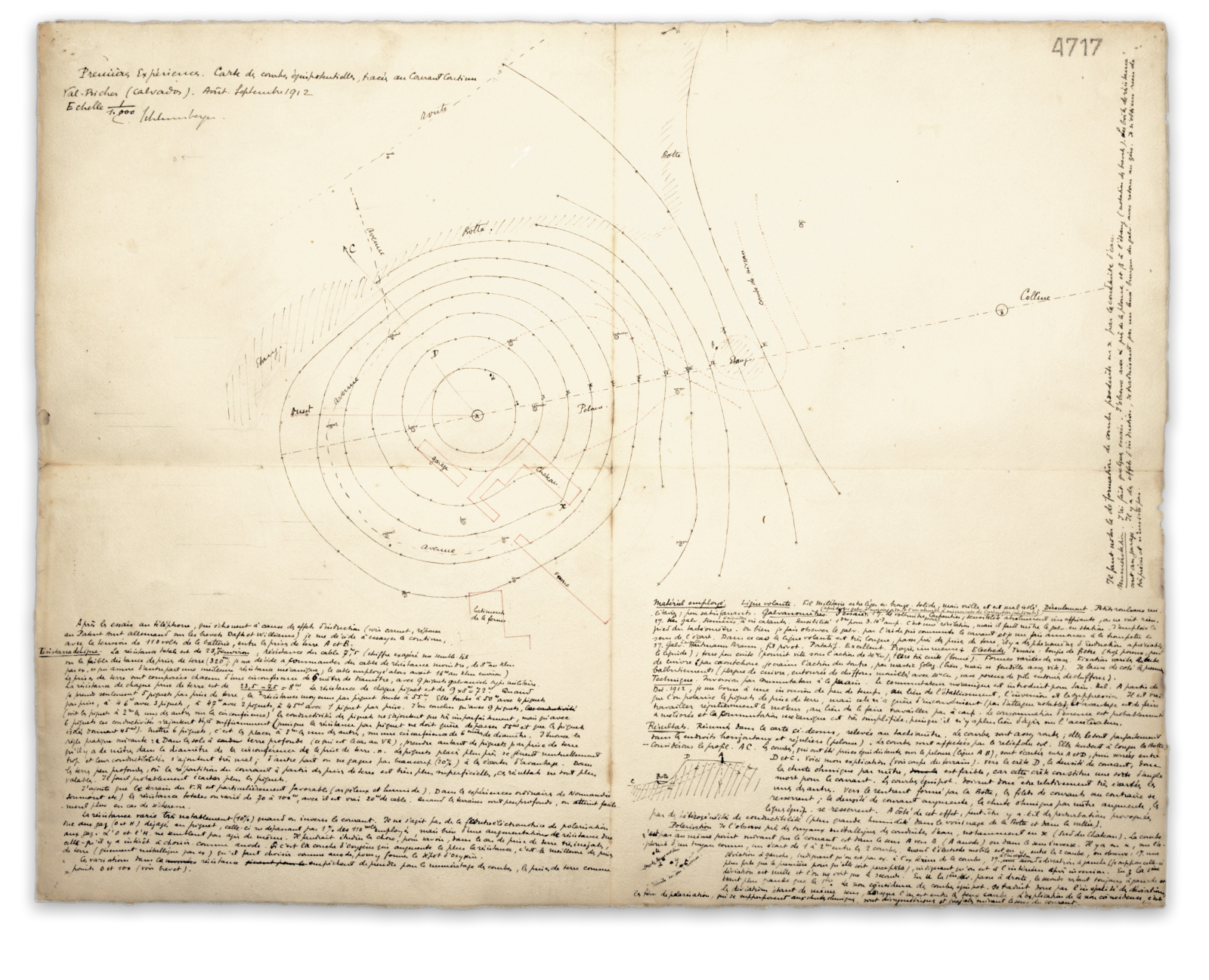
Conrad Schlumberger's log book with his design for the "Schlumberger Array," 1910. Photo courtesy of Schlumberger Company.
In 1912, Conrad tested his theory on the family's estate in Normandy and on iron mines in the area. Conrad successfully mapped surface electric measurements to detect mineral deposits. The mapping also revealed the height, depth and dip of the underground formations. Conrad realized that this new tool could also find oil.
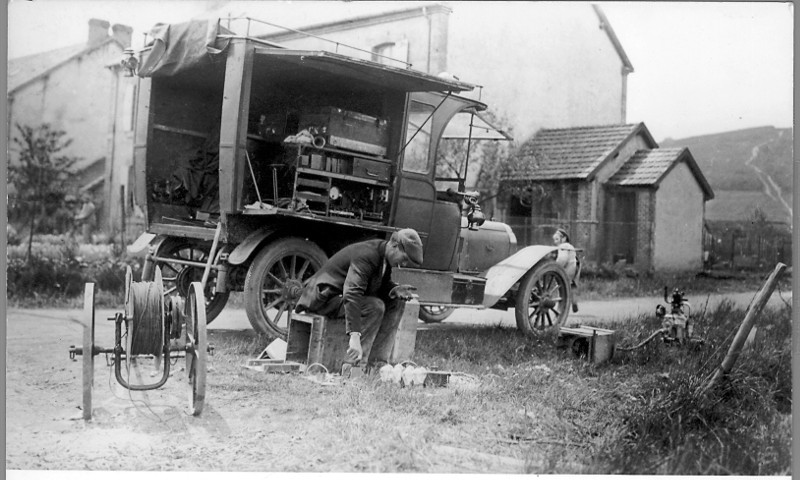
Conrad Schlumberger's truck for mapping surface electrical measurements, 1912. Photo courtesy of Schlumberger Company.
After World War I, Conrad and Marcel formed a company and patented the electrical measurement techniques. The brothers conducted the first large-scale oilfield survey in Romania in 1923. The brothers also developed a technique to lower electrodes underground on a wire to measure the variations in electrical resistivity in a vertical hole drilled through rock formations, rather than at the surface. In 1927, the company conducted the first "electric survey" or "well log" on a well in their hometown region of Alsace.
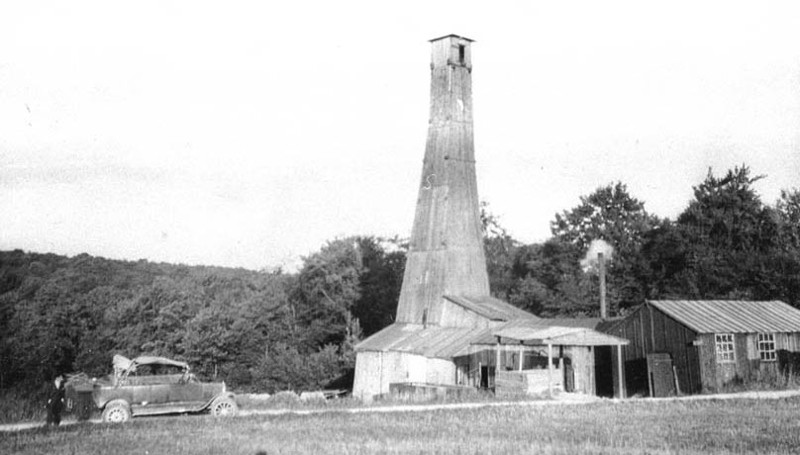
Pechelbronn oil field, Alsace, France, 1927, site of original downhole well log. Photo courtesy of Schlumberger Company.
Well logging was a revolutionary development for oil exploration. Logging a well was more accurate than taking rock samples and was much cheaper than coring — it's use exploded during the 1930's. During World War II, the brothers moved the company's headquarters from occupied France to a new campus, now part of the University of Houston. And they sent Conrad's son-in-law John de Menil to run it.
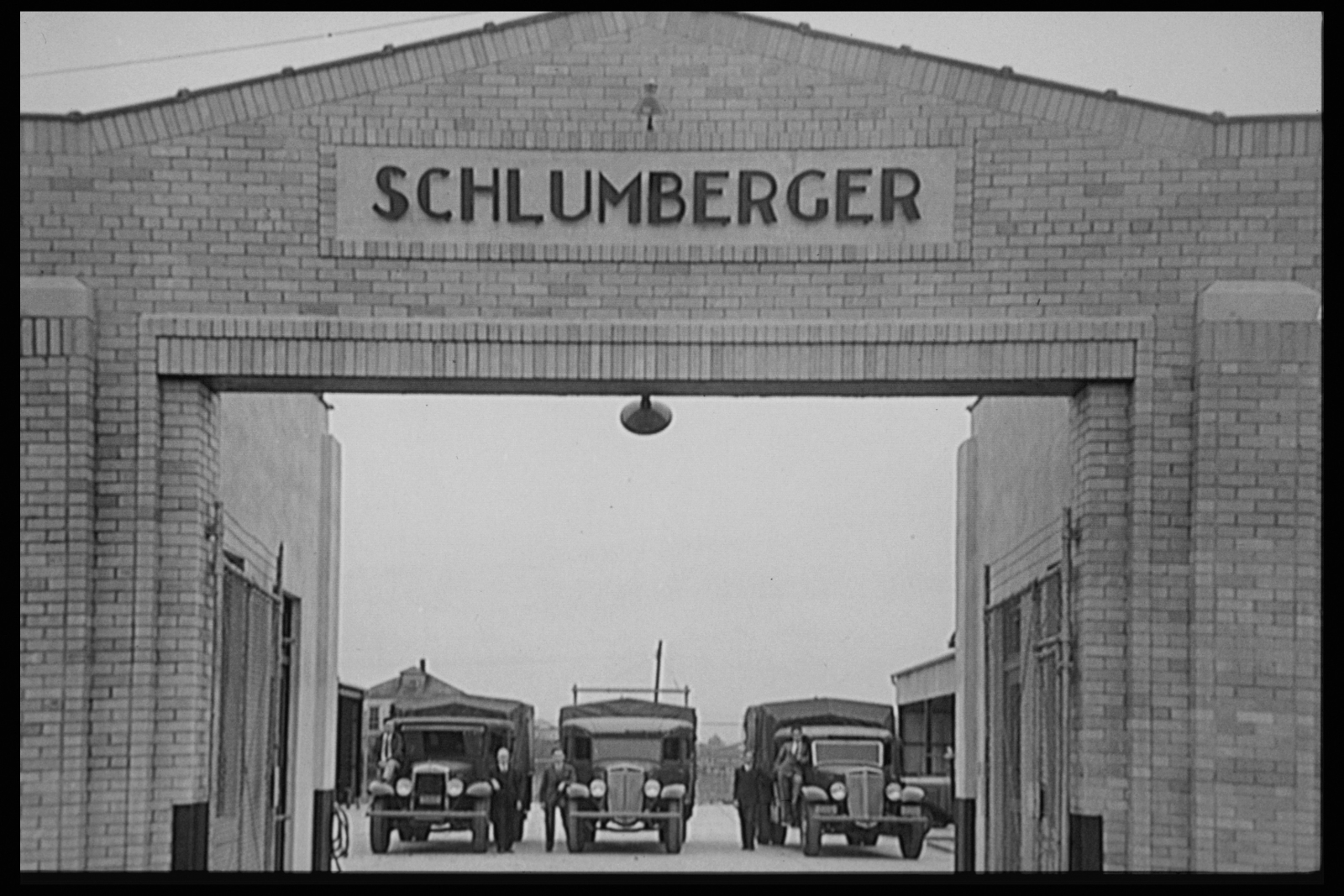
Entry of Schlumberger Houston facility, 1936, photo courtesy of Schlumberger Company. The complex is now part of the University of Houston.
So now you know — one of the country's best small museums was made possible by the invention of well logging.
I'm Janeen Judah, for the University of Houston, and interested in the way inventive minds work.
(Theme music)
Endnotes:
The Menils' private art collection resides at the Menil Collection, one of the United States' best small museums. Dominique and John de Menil were arguably Houston's greatest art patrons and the 2010 book, Art & Activism, tells more of their inspring story.
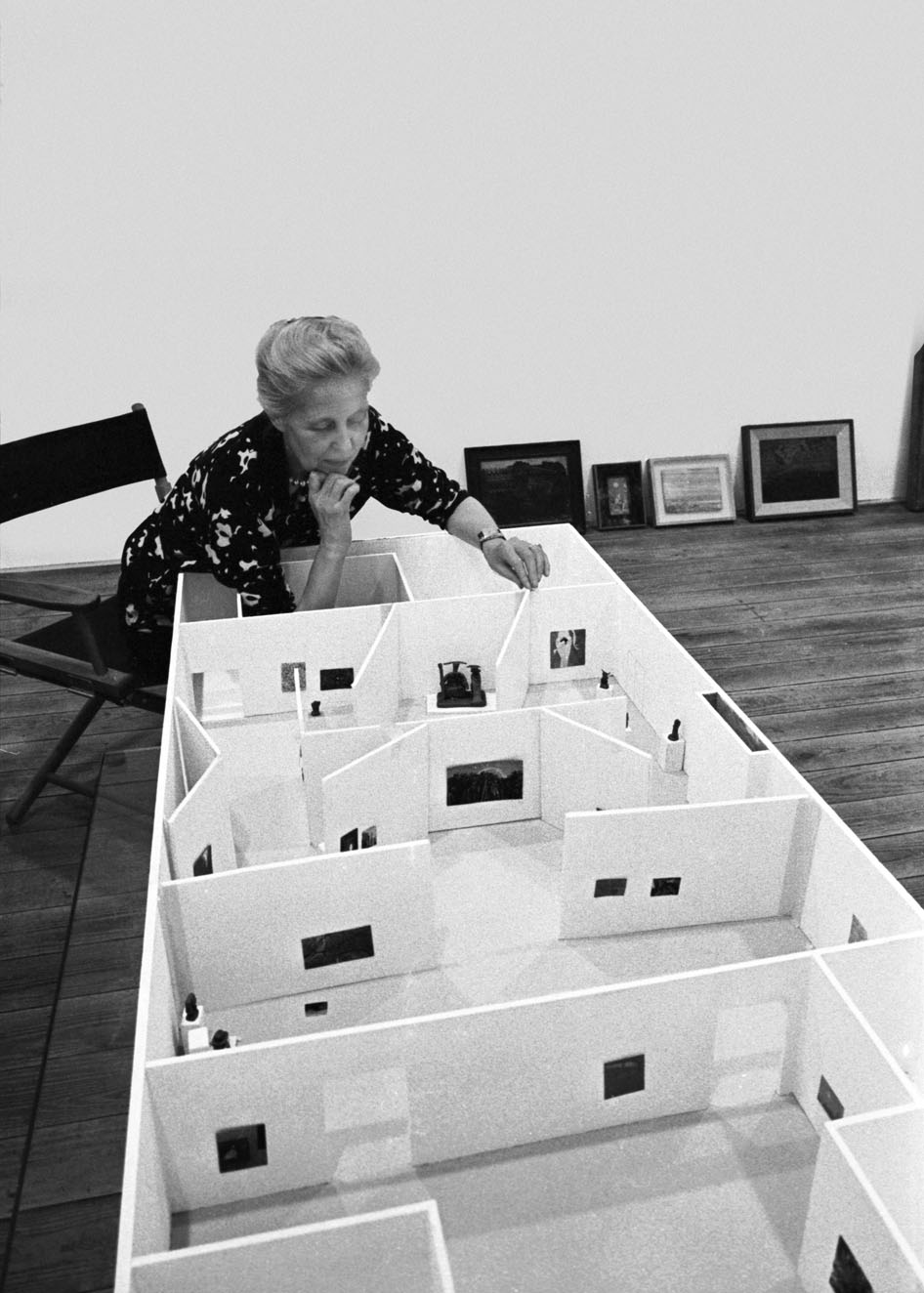
Dominique de Menil with gallery model for "Max Ernst: Inside the Sight," Rice Museum, Rice University, 1973. Photo: John Lee Simons. Courtesy of Menil Archives, The Menil Collection.
Renzo Piano designed the main museum building, which opened in 1987. Piano's most famous early building was the revolutionary 1977 Georges Pompidou Center in Paris. His storied career includes many museums, museum additions, and landmark buildings in city centers around the world. Both architects and museum curators regularly praise the Menil Collection building for its use of natural light and its urban setting. Piano's latest critically acclaimed building is the new Whitney Museum in New York.
Schlumberger is the world's largest oilfield services company, founded by the brothers who invented well logging. The former Schlumberger facility near downtown Houston is now the Energy Research Campus of the University of Houston. Schlumberger is a major employer in the Houston area, with a 240-acre technology center in Sugar Land.
This episode originally aired September 9, 2015.